Timeline
Key Events in the History of the Kansas City Public Library.
1873
The Kansas City Board of Education approves a resolution: That there be established in connection with our schools a library for the use of the officers, teachers and scholars of the public schools of this district, to be known as the Public Library of Kansas City. The first collection consists of eight volumes of the New American Encyclopedia, shelved in an oak bookcase purchased for $8 and placed in the school superintendent's office.
1874
James M. Greenwood is appointed superintendent of schools and first director of the Library, which will remain affiliated with the school district for well more than a century.
1876
The Library's more than 1,000-volume collection, previously accessible for reference only, is made available for checkout. Patrons can purchase yearly subscriptions for $2 or lifetime borrowing privileges for $10.
1881
Carrie Westlake Whitney becomes the Library's first full-time librarian (the same position as today's director). She serves for 30 years, overseeing great innovation and growth, and gains an enduring identity as the "Mother of the Kansas City Public Library."
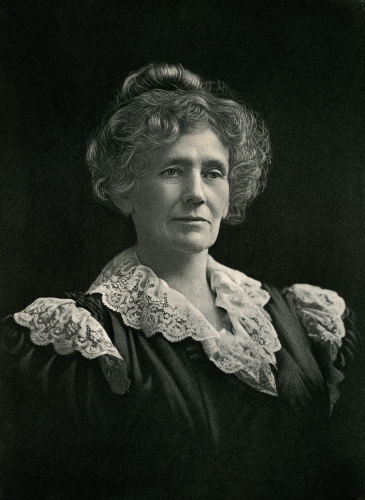
1889
The Library moves into a new two-story building at Eighth and Oak streets, the first in Kansas City dedicated solely for library use. Construction cost: $10,000.
1894
Real estate developer George Sheidley gives the Library $25,000 (the equivalent of $800,000 in 2023), the first large donation in its history. The Library is able to expand its collection by nearly a third, to 40,000 volumes.
1897
A new, two-story Main Library, costing $200,000, opens at Ninth and Locust streets. Whitney adds a separate children's area, believed to be one of the first of its kind in a library in the U.S.
1898
The Library's subscription system is discontinued; it is now free and open to all.
1899
A first branch is added when the city of Westport is annexed into Kansas City. Its 1-year-old Allen Library becomes the Westport Branch.
1901
The Main Library's Western Gallery of Art, already holding a collection donated by William Rockhill Nelson, is renamed the Nelson Gallery of Art after he contributes additional works. The gallery later separates from the Library and eventually becomes the Nelson-Atkins Museum of Art.
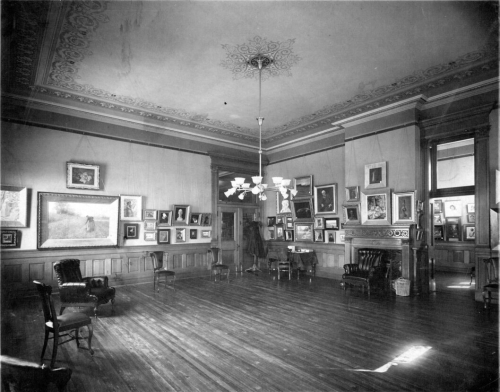
1911
Rapid expansion of the branch system begins under Head Librarian Purd Wright. Eleven locations are added in the next five years, nine more in the 1920s and '30s. Many branches are housed in schools, allowing the Library to contain costs as it expanded to better serve Kansas City's growing population.
1914
The Garrison Square Branch opens December 26 in a recreational facility in Garrison Square Park, the first sustained effort by the Library to serve the African American community.
1917
With America's entry into World War I, the Kansas City Public Library becomes one of 12 collection centers leading a nationwide campaign to collect donated books for troops. Among the recipients is a 33-year-old National Guard enlistee training in Oklahoma, Harry S. Truman.
1922
- The Lincoln Branch opens at Lincoln High School, becoming the only library location specifically serving African Americans in the state of Missouri.
- Library circulation surpasses 1 million.
1931
Library circulation surpasses 2 million.
1937
The Bulletin of the American Library Association identifies the Library as one of eight nationally hosting regular radio programs for children. The segments involve storytelling, reviews of children's books, and author interviews.
1939
The Library is caught in a nationwide debate over the suitability of John Steinbeck's The Grapes of Wrath. Against the wishes of Head Librarian Louis Nourse, the school board orders the book removed from circulation – then allows its return nine months later (still keeping it off Library shelves and inaccessible to children).
1944
A remarkable 44% of Kansas City's population holds library cards, highest among the nation's large cities. Patrons check out some 2 million books during the year.
1945
More than 170 names are listed in an honor roll of Library alumni who served in World War II. Seven former staff members were killed in the conflict, including U.S. Army Air Forces Lt. Glessner Reimer, a P-47 Thunderbolt fighter pilot who participated in more than 60 air missions. The former Main Library stack room staffer died in action over Vire, France, in July 1944.
1950
The Library introduces Kansas City's first bookmobile, a 30-foot "branch library on wheels" that circulates more than 100,000 books in its first year.
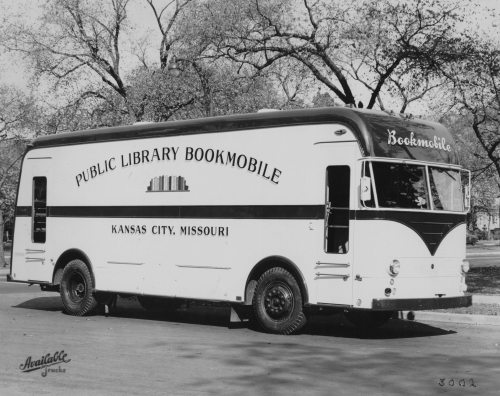
1958
Library circulation reaches 3 million.
1960
- A new $4.5 million, "space age" Main Library opens at 12th and Oak streets, occupying seven lower floors of a building it shares with the school district. The Missouri Valley Room opens soon afterward on the third floor; it houses the Library's reference collections in local history, genealogy, and Western history.
- Annual circulation now exceeds 3.8 million.
1967
The Plaza Branch opens, becoming what is today the busiest location in the Library system.
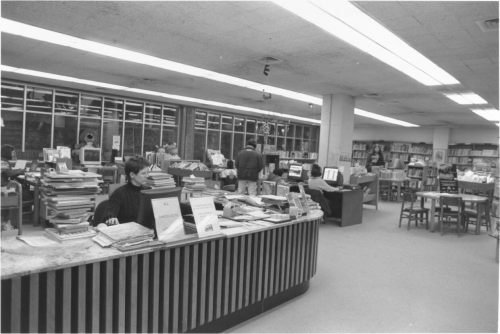
1973
The Library celebrates its 100th anniversary.
1977
Selected librarians are taught to use computers to access the many bibliographic indexes that are now "on-line."
1984
- The Library adopts the American Library Association's Freedom to Read statement and Library Bill of Rights.
- The Board of Education authorizes the formation of the Friends of the Kansas City Public Library.
1985
- The Library establishes reciprocal lending agreements with other Kansas City-area library systems, allowing patrons to borrow books across multiple systems.
- The first public access computers (Apple IIe models) are installed in the Main Library and six branch locations.
1987
Online catalog access becomes available at all Library branches.
1988
- The Library gains its long-sought independence, separating from the school district with two-thirds approval from district voters. Mary Arney, who'd once chaired the school board's library committee, is named president pro tem of the first independent Library board.
- The long-awaited Lucile H. Bluford Branch, named for the noted civil rights crusader and editor of The Kansas City Call, opens on Kansas City's East Side. A new South (Waldo) Branch also opens.
1989
The North-East and West Independence (Trails West) branches open less than three weeks apart in January and February.
1990
With online catalog access available at all Library locations, physical card catalogs are removed from the Main Library.
1991
Library Director Dan Bradbury is named Librarian of the Year by Library Journal. His tenure, from 1983 to 2003, sees the Library forge a new identity independent of the school district, secure two tax levy increases, and embrace the internet age.
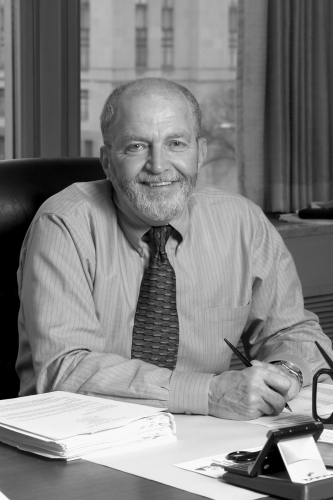
1995
- The Southeast Branch opens.
- The Library launches its first public website.
1997
Sugar Creek Branch opens.
1998
The number of Library cardholders surpasses 200,000.
1999
The Library opens a technology center and begins training classes open to the public.
2001
The new West Branch, originally called the Biblioteca de las Americas (Library of the Americas), is renamed the Irene H Ruiz Biblioteca de las Americas in response to petition signed by more than 500 community members. It honors the longtime librarian who almost single-handedly transformed library services to the West Side's Hispanic community.
2004
A new Central Library opens at 10th and Baltimore in the former First National Bank building. The Library receives the National Preservation Honor Award from the National Trust for Historic Preservation for its restoration of the almost century-old building.
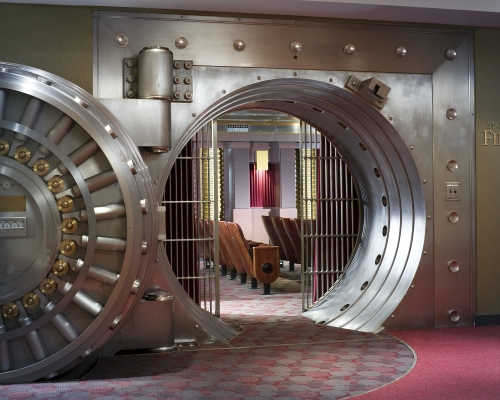
2005
- A new Plaza Branch opens at 48th and Main streets, across Brush Creek from the Country Club Plaza.
- The Library begins offering downloadable e-books.
2006
The Library launches what soon becomes a nationally renowned signature programming series, featuring discussions by authors and other speakers, cultural presentations, and public forums addressing civic issues and concerns.
2008
The Library receives the prestigious National Medal for Museum and Library Service from the Institute for Museum and Library Services. It honors "outstanding institutions that make significant and exceptional contributions to their communities."
2012
The Digital Branch opens – 24 hours a day, seven days a week – overseeing the Library's public-facing digital resources including its main website, online catalog, e-book lending, and research and educational databases.
2013
- The Library launches its first digital history website, Civil War on the Western Border: The Missouri Kansas Conflict, 1854-1865 (civilwaronthewesternborder.org). It receives four national awards from historical and museum associations, most notably the 2014 Roy Rosenzweig Prize for Innovation in Digital History from the American Historical Association.
- Alvin Sykes is named Library's first Scholar in Residence. The self-taught human rights activist became a Library fixture in compiling research that convinced Congress to enact the Emmett Till Unsolved Civil Rights Crime Act of 2008.
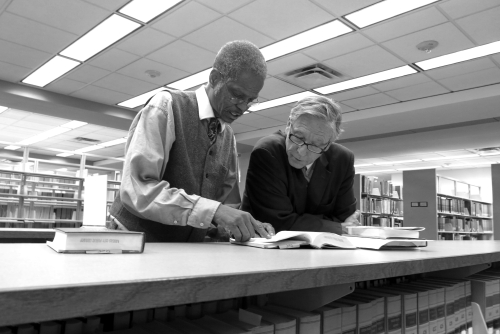
2014
The Library and partnering KCPT-TV receive the first of two regional Emmy Awards for Meet the Past programming, this one spotlighting celebrated African American horse trainer and equestrian showman Tom Bass.
2018
Voters give 83-percent approval to an 8-cent increase the Library's property tax-based operating levy, the first in 22 years. It is earmarked to upgrade facilities and sustain the Library's collections and menu of children's, family, senior, and other services.
2019
- The Library implements a new Freedom From Fines policy, becoming one of the nation's first public library systems to permanently eliminate late fees in book lending.
- Crosby Kemper III, the Library's director for nearly 15 years, receives a presidential nomination to head the Institute of Museums and Library Services. He begins a four-year term in January 2020.
2020
Amid the outbreak of the COVID-19 pandemic and a citywide stay-at-home order, the Library closes its physical locations in March. It joins libraries across the country in buttressing digital resources and devising and employing other innovations to deliver services and resources. A phased-in reopening of physical locations begins in May.
2021
The Library, the University of Missouri-Kansas City, and five other Missouri universities present the inaugural Maya Angelou Book Award to poet Threa Almontaser for her collection The Wild Fox of Yemen. The annual national honor recognizes notable new releases of American fiction and poetry focusing on social justice and inclusion.
2023
Cindy Hohl, the Library's director of policy analysis and operational support, is elected president of the American Library Association for 2024-25.